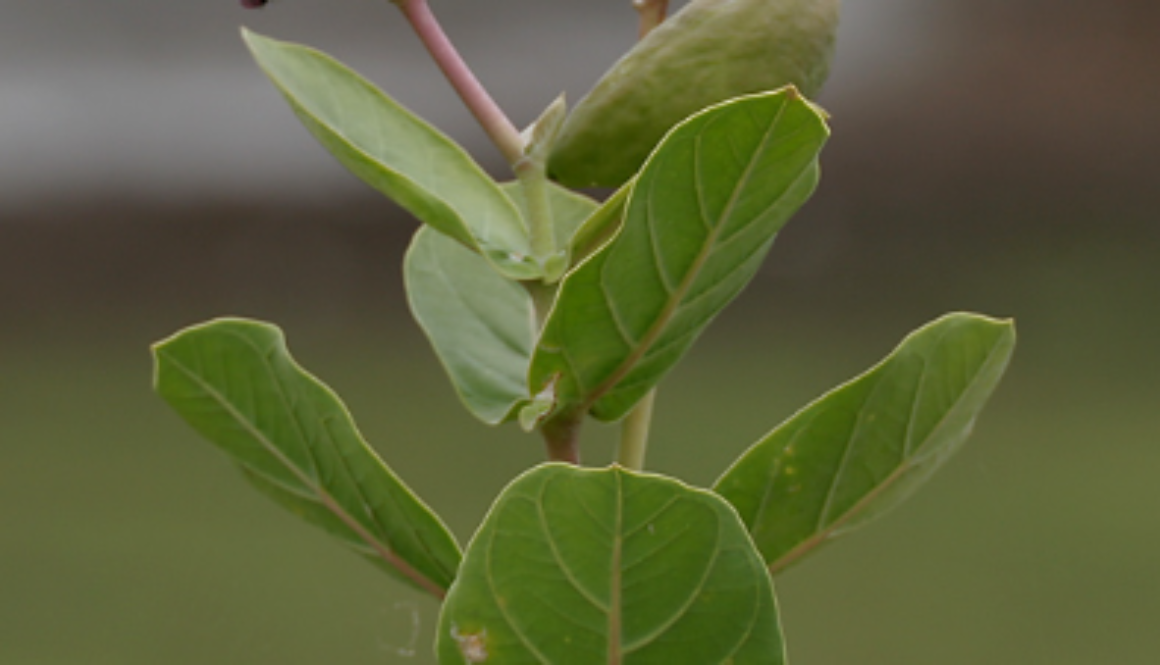Akara
A common weed in waste lands, cultivated fields, road sides, grazing land or degraded sites. It is stout hoary tomentose shrub with soft corky, spongy stem. Leaves are broadly ovate to ovate-oblong, almost horizontal, cottony pubescent on both surfaces with amplexicaul base. Flowers white with purplish tips cotton pubescent in sub-umbellate cyme. Fruit is a pair of follicle, ellipsoid or ovoid. Seeds numerous broadly ovate flattened, light brown and white tuft of silky hair at the pointed end. Flowering and fruiting throughout the area.
Part used: Whole plant
Usage: All parts of plants are used as anti-periodic, antidote and expectorant. The root paste is applied on snake and scorpion bite. Root bark diaphoretic used in dysentery, expectorant and emetic. The inner bark of stem is tied over cuts for early healing. Powdered flowers or gynostemium are used in cold, cough and asthma. Gynostemium
is eaten for the cure of cancer. The latex is applied externally over swollen portion to reduce pain in piles and boils. The latex is also applied on knee with the help of camel’s petted to cure the knee pain. The extract of leaves
is relieves earache. Fresh or warm leaf applied over painful rheumatic joints, swellings, sores and wounds.
Agrotechniques : It is abundantly found in nature. No specific Agrotechniques are available.

